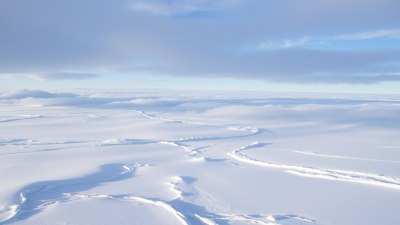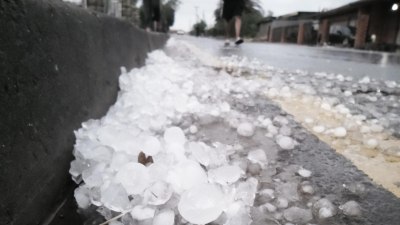What Really Happens When Warm Air Meets Cold
Explore the fascinating atmospheric processes and weather phenomena that occur when warm air meets cold air.

Image created with Flux Schnell
When warm air meets cold air, a dynamic interaction unfolds that significantly shapes our weather and climate. This convergence is fundamental in producing various atmospheric phenomena, including clouds, storms, and even temperature inversions. The meeting of air masses with different temperatures sets off a sequence of physical changes driven by principles of thermodynamics and fluid dynamics.
Air masses are large bodies of air with uniform temperature and humidity characteristics, defined by their source regions. When distinct air masses converge, their contrasting temperatures and moisture levels create instability in the atmosphere. The interface between these differing air masses is often called a front, which acts as a boundary delineating warm and cold air.
Understanding Air Mass Characteristics
Warm air typically contains more moisture and is less dense than cold air. Being lighter, warm air tends to rise when it encounters cold air, which is denser and tends to sink or spread beneath the warm air. This vertical movement leads to critical atmospheric changes. The initial response when warm air meets cold air is often lifting of the warm air over the denser cold air, initiating cooling as the air ascends.
As warm air rises, the pressure decreases, causing expansion and subsequent cooling through an adiabatic process — that is, cooling without heat exchange between the air parcel and its environment. If the rising warm air contains moisture, the cooling causes water vapor to condense into liquid droplets or ice crystals, forming clouds. This process releases latent heat, which can further drive upward motion and encourage cloud development, sometimes culminating in precipitation.
Types of Fronts and Their Effects
There are several classifications of fronts formed when warm and cold air interact, including cold fronts, warm fronts, stationary fronts, and occluded fronts. Each front type exhibits distinct behavior based on the relative movement and temperature contrasts of the air masses involved.
A cold front occurs when a cold air mass aggressively advances and forces the warmer air to rapidly lift. This rapid uplift often leads to the formation of cumulonimbus clouds, triggering intense weather effects such as thunderstorms, heavy rain, or even hail. Due to the aggressive displacement of warm air, cold fronts tend to move quickly, causing abrupt changes in weather conditions with sharp temperature drops.
In contrast, a warm front forms when a warm air mass slowly slides over a retreating cold air mass. The gradual lifting of warm air over the cold ground encourages widespread, layered clouds called stratus clouds to form. These clouds can bring persistent, steady precipitation, often rain or drizzle, over an extended period. Warm fronts generally move slower and produce gentler weather transitions compared to cold fronts.
Stationary fronts occur when neither the warm nor cold air mass advances, resulting in a standstill boundary. This can lead to prolonged periods of cloudiness, fog, and continuous precipitation in the affected area. The stagnation of air masses on either side maintains temperature and moisture contrasts, allowing weather conditions to linger.
Occluded fronts develop when a cold front overtakes a warm front, lifting the warm air entirely off the ground. This complex interaction often leads to mixed weather patterns, combining the features of both warm and cold fronts and may produce a variety of precipitation types.
Cloud Formation and Precipitation Mechanisms
The process of cloud formation when warm and cold air meet is essential for understanding weather development. As warm air rises and cools, the relative humidity increases until it reaches saturation—the point at which the air cannot hold any more water vapor. At saturation, condensation nuclei such as dust or pollution particles facilitate water vapor condensation, forming the multitude of droplets that collectively appear as clouds.
The condensation releases latent heat, warming the surrounding air and maintaining upward movement. This mechanism is especially important in storm formation, as it provides the energy that powers the convective currents in thunderstorms.
Precipitation occurs when cloud droplets collide and coalesce, growing large enough to overcome atmospheric updrafts and fall as rain, snow, sleet, or hail, depending on temperature profiles throughout the air column. The interplay of warm and cold air influences the type and intensity of precipitation, with warmer layers favoring rain and colder layers promoting snow or ice particles.
Weather Phenomena Resulting From Warm-Cold Air Interactions
The meeting of warm and cold air masses is responsible for many classic weather phenomena. Thunderstorms, for example, frequently arise along cold fronts or in regions where warm, moist air gains rapid lift. These storms can escalate into severe weather events such as tornadoes or hailstorms, especially when combined with wind shear and atmospheric instability.
Another manifestation is fog formation, particularly radiation fog or advection fog. Radiation fog occurs when the earth's surface cools overnight, chilling nearby warm, moist air to its dew point. Advection fog arises when warm, moist air passes over a cooler surface, such as cold ocean currents or chilled land areas, causing saturation and condensation near the ground.
Temperature inversions can also develop when warm air overlays cooler air near the surface, trapping pollutants and creating smog conditions in urban areas. These inversions influence air quality and visibility, sometimes leading to health advisories.
Role in Larger Climate and Storm Systems
On a larger scale, the interaction of warm and cold air masses drives mid-latitude cyclones, which are major storm systems responsible for much of the weather variability in temperate regions. Along the cyclone’s fronts, repeated processes of warm air rising over cold fronts lead to extensive cloud cover and varying precipitation patterns as the system progresses.
In tropical regions, while air mass fronts are less defined due to more uniform temperatures, the contrast between warm humid air and occasional influxes of cooler dry air can still produce convective storms and influence monsoon cycles.
Scientific Observations and Weather Models
Meteorologists closely monitor the meeting points of warm and cold air through satellite imagery, weather radar, and ground-based observations. These observations inform numerical weather prediction models that simulate atmospheric physics. By inputting temperature, pressure, humidity, and wind data, models forecast the evolution of fronts, cloud formation, and potential storms.
Improvements in understanding thermodynamic interactions between air masses have led to more accurate short- and medium-term weather forecasts. These predictions help communities prepare for severe weather and mitigate hazards linked to rapid temperature changes and precipitation events.
Human Experience and Practical Impact
The interaction of warm and cold air affects daily life by influencing temperature swings, precipitation patterns, and severe weather occurrences. For farmers, understanding frontal passages governs planting and harvesting schedules. Aviation operations rely on knowledge of frontal zones to navigate turbulence and safely plan flights.
In urban planning, anticipating how warm air trapped by cold air inversion layers can degrade air quality informs policies to reduce emissions. Energy demand also fluctuates as temperature transitions driven by these air mass interactions affect heating or cooling needs.
In summary, the fundamental process when warm air meets cold air involves the rise of warm, moist air over denser cold air, leading to cooling, condensation, cloud development, and various weather phenomena. The specific form and intensity of the resulting weather depend on the characteristics and movement of the air masses, moisture content, and local terrain influences.
This ongoing atmospheric interaction is a key driver of Earth's weather systems, shaping the climate we experience daily. Whether triggering thunderstorms, producing steady rains, generating fog, or fostering temperature inversions, the meeting of warm and cold air is a vital natural process crucial to meteorology and environmental science.











